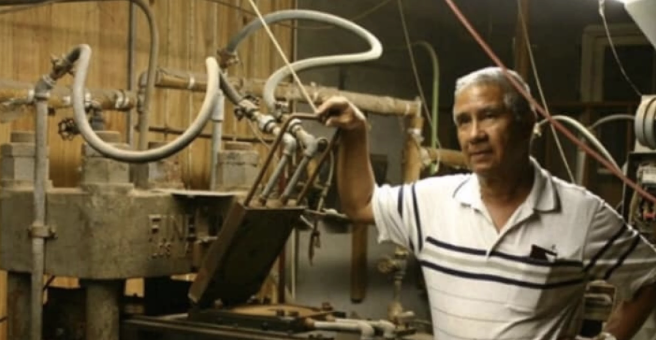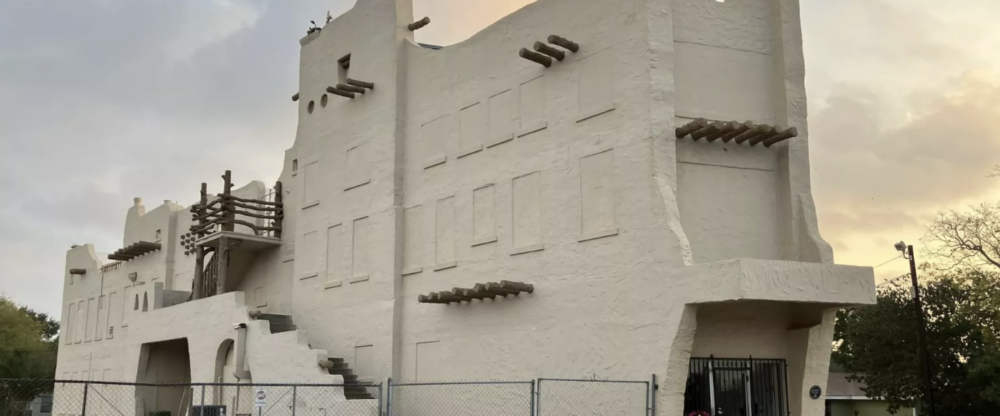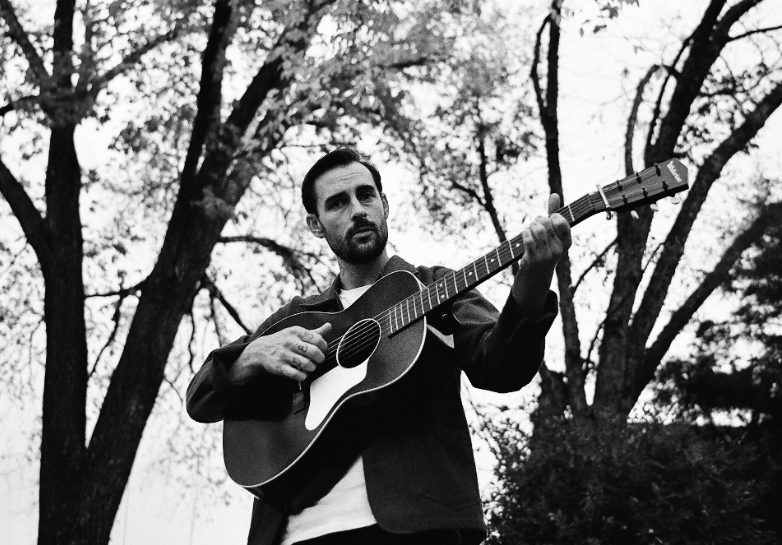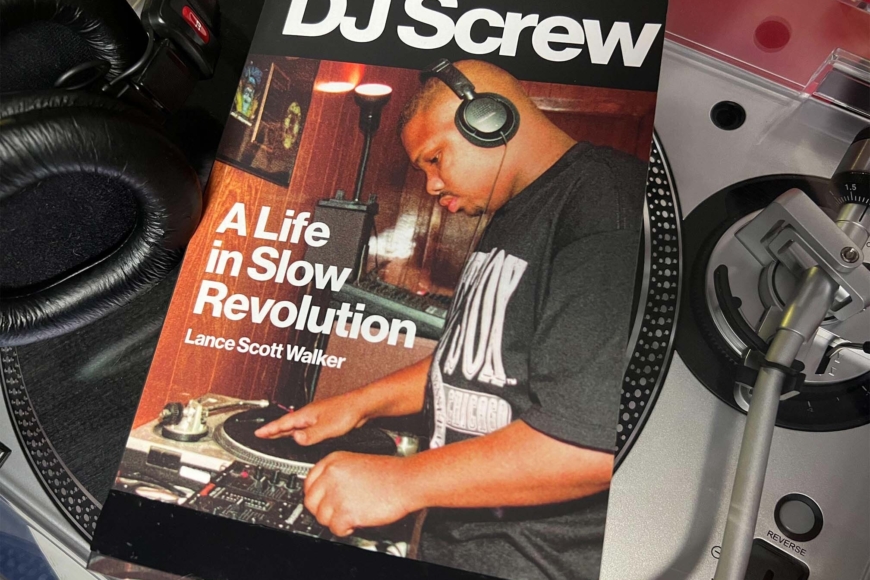Texas Standard | By Michael Marks | Published February 20, 2023 at 7:00 AM CST
The Texas Conjunto Music Hall of Fame and Museum in San Benito re-opened on Saturday, Feb. 18, after years of closure due to the pandemic.
The museum commemorates the music and people of conjunto, a style that comes from South Texas and northern Mexico. It’s a mashup of instruments and genres that were popular there in the late 19th century. The accordion and bajo sexto – a twelve-string bass guitar – are two of its hallmarks. It was the music of working-class folks – a joyful soundtrack for day-to-day life.
The museum is the brainchild of Rey Avila. Now it’s operated by his daughter, Patricia Avila. She spoke to the Texas Standard about the history of conjunto, and what it means to move the museum into a new space. Listen to the story above or read the transcript below.
This transcript has been edited lightly for clarity:
Texas Standard: Congratulations on the new digs. It’s a big deal for the museum and for San Benito itself, which I understand has a close relationship with conjunto music, to say the least. Tell us a little bit more about that.
Patricia Avila: Yes, you’re correct. Yes, we are known as the birthplace of conjunto music here in San Benito, Texas. And the reason we feel we’ve got that right is because Narciso Martínez is considered the father of conjunto music. He grew up in a little small community outside of San Benito called La Paloma. And that’s why we claim Narciso Martínez as our own.
Put this on a timeline for us. When are we talking about all this sort of happening?
Well, we’re looking about 1936. 1936 is when, you know, this music started coming along. You know, I’m an ’80s girl. I’m Generation X. I grew up with a lot of rock and roll stuff. But my dad would always play the conjunto music and my grandmother would play the conjunto music on the radio, we’d hear Narciso Martínez, we’d hear Tony de la Rosa, we’d hear Ruben Vela. And so those are the music that we grew up with – my parent’s music. We would call it our parents music, right? But, you know, I think as you get older, we start to realize it’s our heritage, it’s our music. And so we grew to love the music.
You know, that’s sort of the dawn of the electronic music age, too, when you could buy an amplifier at a corner store and play a dance hall, right? I hear that this is something of a family affair for you. I know you run the museum now, but this was your father’s idea?

Yes, it is. You know, my father, Ray Avila Sr., he is our founder. He loved history. He just loved history in general. Never played a musical instrument in his life. However, he just loved the history of everything and anything that just captured his heart – which one of them was conjunto music, of course. After he retired, me and him would travel all over the nation and would visit places, museums especially. And we went to Nashville, we went to go visit the Country Music Hall of Fame. And he brought back that idea, saying, ‘You know what? If country music can have their hall of fame, we deserve ours too.’ And so he wanted to tell the story of the working man for the conjunto music. And so my dad wanted to capture all that. And so he founded his museum in the year 2000. And he was with us until 2019. We lost my dad to cancer. You know, he just passed the baton to us, and we’re just carrying it along.
Tell us about the new space. How’d you acquire it and what’s it look like?
Oh, yeah, let me tell you. I said before my dad had 650 square feet. It was also a city owned building. We got hit with COVID, and for three years the museum was shut down. The city comes back to us and says, ‘Hey, we got this new space. What do you think?’ It’s not actually a “new” space, it’s a historical building from the 1930’s. It’s called the Aztec Building. Very iconic. Three stories high, the dance floor on the top. It was a dream come true, like it’s overlooking a resaca. As soon as I walked in, I was like ‘Oh, my gosh, that’s it.’ It’s over 2000 square feet.
And so everything that my dad had stored for 20 years is now, almost 90% of it, is pretty much out. We signed the facility agreement on Nov. 1, and Nov. 5 is when we made the announcement. And we’ve been here ever since. I became a retired teacher in December because this is a full time job and I haven’t had a day off. It’s just been here, literally here until 10:00 at night sometimes, just trying to get everything out. And some of these things are finally going to be displayed for the public to see.

What sort of exhibits? What do you have on display?
Let me tell you what we have. We have some very interesting things. Ruben Vela is one of conjunto pioneers – we have his suit. We have some awards of his. We just have a slew of instruments. We have Ruben Garza’s bajo sexto. Eva Ybarra is from San Antonio. She’s an accordionist since she was a young little girl. We have one of her show outfits also on display. So we have a lot of artifacts on display, a lot of instruments.
» SEE ALSO: Eva Ybarra squeezes out the accordion competition
Tell us a little bit about what distinguishes that conjunto sound. I mean, it has the accordion, the bajo sexto. Is there a sort of a swing to it, a feel to it that makes it ‘Oh, yeah, this is conjunto right here’?
Yeah. You know. It’s kind of like the vibe of a German polka. You know, the music has that German kind of sound to it – tun, tun, tun, tun. But, you know, but the thing is, they have its little twist. It has a little twist that you just hear it, you know it’s conjunto music and it’s feel-good music, it’s dancing music and it just makes people – in Spanish they call it “alegre” – makes them happy.
Well, what’s it like to be able to take this pet project of your father’s into this new stage of development?
Yeah, it’s overwhelming. My dad, if you knew my dad, he was a very energetic man. He could probably do the work, but it takes three of us to do it, you know? But you know what, it’s something that was placed in my heart years ago, and I’m just so honored to continue his legacy and for the world to see the music and appreciate the music of the working man that loved to listen to conjunto music and learn more of the history of our heritage, as well.
pleas. Your gift helps pay for everything you fi



